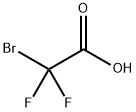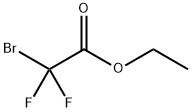A1543150
2-(2-Aminoethoxy)ethanol , 98% , 929-06-6
Synonym(s):
2-(2-Aminoethoxy)ethanol;Diethylene glycolamine;Ethylene glycol mono(2-aminoethyl) ether
CAS NO.:929-06-6
Empirical Formula: C4H11NO2
Molecular Weight: 105.14
MDL number: MFCD00008181
EINECS: 213-195-4
Update time: 2022-07-08
PRODUCT Properties
| Melting point: | -12.5 °C |
| Boiling point: | 218-224 °C(lit.) |
| Density | 1.05 |
| vapor pressure | <0.1 hPa (20 °C) |
| refractive index | n |
| Flash point: | >230 °F |
| storage temp. | Store below +30°C. |
| solubility | Chloroform (Sparingly), DMSO (Sparingly) |
| pka | 14.37±0.10(Predicted) |
| form | Crystalline Powder and or Chunks |
| color | Yellow |
| PH | 10.2 (10g/l, H2O, 20℃) |
| Odor | slightly viscous liq., amine odor |
| explosive limit | 2.0-15.5%(V) |
| Water Solubility | miscible |
| Sensitive | Air Sensitive |
| BRN | 906728 |
| Stability: | Stable. Incompatible with acids, strong oxidizing agents. Reacts with carbon dioxide. |
| InChIKey | GIAFURWZWWWBQT-UHFFFAOYSA-N |
| LogP | -1.89 at 25℃ |
| CAS DataBase Reference | 929-06-6(CAS DataBase Reference) |
| NIST Chemistry Reference | Ethanol, 2-(2-aminoethoxy)-(929-06-6) |
| EPA Substance Registry System | 2-(2-Aminoethoxy)ethanol (929-06-6) |
Description and Uses
Amino-PEG2-alcohol is a short PEG linker containing an amino group with a hydroxyl group. The amino (NH2) group is reactive with activated NHS esters, carbonyls (ketone, aldehyde) etc.
2-(2-Aminoethoxy)ethanol is commonly used as a spacer/linker in the synthesis of bioconjugate materials for applications such as drug delivery and protein labeling. It is also employed as a receptor chain in the preparation of carboxamidoquinoline based water-soluble, ratiometric fluorescent zinc sensor.
Safety
| Symbol(GHS) |  GHS05 |
| Signal word | Danger |
| Hazard statements | H314 |
| Precautionary statements | P280-P301+P330+P331-P303+P361+P353-P304+P340+P310-P305+P351+P338-P363 |
| Hazard Codes | C |
| Risk Statements | 21-34 |
| Safety Statements | 26-36/37/39-45-24/25 |
| RIDADR | UN 3055 8/PG 3 |
| WGK Germany | 1 |
| RTECS | KJ6125000 |
| F | 10-34 |
| Autoignition Temperature | 370 °C |
| TSCA | Yes |
| HazardClass | 8 |
| PackingGroup | III |
| HS Code | 29221980 |
| Hazardous Substances Data | 929-06-6(Hazardous Substances Data) |
| Toxicity | LD50 orally in Rabbit: 3000 mg/kg LD50 dermal Rabbit > 3000 mg/kg |






